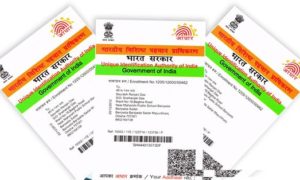Akin to a credit card, a Buy Now, Pay Later (BNPL) card lets consumers make purchases and pay back over time in several installments. Both the options also offer an interest-free repayment window. But, what’s the need of two different products that serve the same purpose? There are key differences in the fee and rewards structures of the two financing options.
BNPL cards offered by Uni and Slice let customers divide the outstanding bill in three equal interest-free installments over three months. Uni allows its users to pay a minimum amount at the end of the month and carry forward the remaining balance. “We levy a carry forward fee of 3-4% on the remaining balance from that particular billing cycle when minimum due is paid,” said Nitin Gupta, founder and CEO, Uni. Credit cards, on the other hand, charge an interest on the entire remaining balance when minimum dues are paid. Slice doesn’t offer minimum due payment option.
Read More:-Airtel, Axis Bank launch first-of-its-kind ‘Airtel Axis Bank Credit Card’
In pay later cards, if you are unable to pay back the full amount by the end of three months, you can convert the due amount in equated monthly installments (EMIs) for a longer period. Gupta said they don’t charge interest per se, but have late fees on default. “For the sake of explanation, the implied interest can range from 16%-40% per annum depending on the due amount and the user’s repayment behaviour,” he said. Interest rate charged by credit cards on outstanding balance is among the highest across loan categories at 36-42% annualised.
As for rewards, most credit cards offer rewards on each transaction that keep getting accumulated and can be redeemed in the form of air miles, gift vouchers, hotel bookings, etc., after a certain number of points are collected. Uni offers a flat 1% cashback if the total amount due is paid back by the end of the first month. Slice’s cashback scheme works in the form of ‘monies’. With each transaction, the user gets the equivalent number of monies as the money spent. The accumulated monies can be converted to cashback with the rate of conversion being 1%, 1.5% and 2% for monies balance up to 3 lakh monies, between 3 lakh and 5 lakh monies and over 5 lakh monies, respectively. For example, if a user has 1.5 lakh slice monies, they will convert this into ₹1,500 cashback (1% of 1.5 lakh).
Read More:-Last-Minute Tax Planning: 6 things to do before March 31
In other smaller differences, credit cards can be used for transactions when you are overseas, which paylater cards don’t allow. However, paylater cards can be used to make certain international transactions from India. Further, BNPL cards give first-time users a lower credit line beginning from ₹2,000, which increases overtime as per usage and payment behaviour, while credit limit on credit cards typically starts from ₹20,000.





































